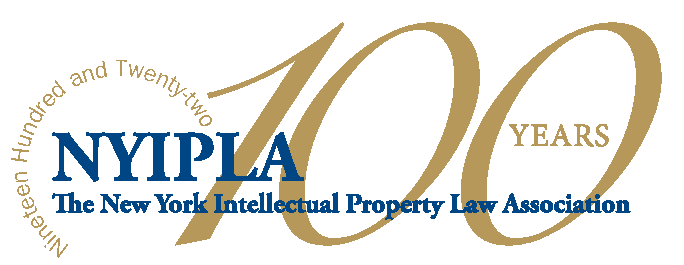Inventor of the Year Award
The Inventor of the Year Award is presented each year in recognition of the contribution that the invention has and/or will make towards society as a whole.
For the Call for Nominations - Inventor of the Year rules and instructions, please click HERE. This year's winner will be awarded $5,000.00. For additional information, FAQ's.
| 2023 Inventor of the Year Award Winners | |
|
Dr. Andre S. Bachmann, Dr. Caleb P. Bupp, and Dr. Surender Rajasekaran Michigan State University |
|
| Name | Organization | Recognized For | Year |
| Dr. Andre S. Bachmann, Dr. Caleb P. Bupp, and Dr. Surender Rajasekaran | Michigan State University | Recognized for their methods and compositions to prevent and treat disorders associated with mutations in the ODC1 gene. U.S. Patent No. 11,273,137 B2. | 2023 |
| Dr. Steven Carlson | OptoDot | Recognized for his dedication to pioneering safer separators using carbon material for lithium-ion batteries. His contributions lead to a reduced rate of hazardous conditions when implementing batteries into commonly used devices. | 2022 |
| Drs. Yancopoulos and Kyratsous | Regeneron Pharmaceuticals Inc. | Recognized for their important work applying Regeneron’s antibody discovery technologies in rapid response fashion to address the deadly COVID-19 pandemic, leading to an important investigational treatment for the novel coronavirus and shaping how drug developers will address future outbreaks. | 2021 |
| Dr. Rajiv Joshi | IBM Thomas Watson Research Center | Recognized for his pioneering work in advancing the electronic industry and improving artificial intelligence capabilities. | 2020 |
| Dr. Sharon Shacham | Karyopharm Therapeutics | Recognized for her significant research that led to the development of an oral cancer treatment, Selinexor |
2019 |
| Dr. Michael Kass | NVIDIA | Contributions to the field of computer graphics |
2018 |
| Dr. Adrian Krainer |
Cold Spring Harbor Laboratory | Inventor of U.S. Patent No. 8,980,853, recognized for his research that led to the first-ever drug for the treatment of Spinal Muscular Atrophy (SMA) in children and adults | 2017 |
| Dr. Thaddeus Prusik | Temptime Corp. | Contributions to the development of low-cost temperature history indicators for use with vaccines and other biologics | 2016 |
| Dr. Brian D'Andrade | Exponent, Inc. | Disclosures relating to the field of technologies and materials for organic light emitting diodes (OLEDs) | 2015 |
| Drs. Sadelain and Brentjens | Memorial Sloan-Kettering Cancer Center |
Disclosures relating to the design of chimeric antigen receptors, or CARs | 2014 |
| Drs. Schuchman and Desnick | Icahn School of Medicine at Mount Sinai | Work on Niemann-Pick Disease, leading to the discovery of the gene and subsequently the first genetic screening for the disease. Enzyme replacement therapy is currently under development in phase 2 clinical trials. | 2013 |
| Dr. Radoslav Adzic | Brookhaven National Laboratory |
Extensive work in the field of nanocatalysts with reduced platinum loading for applications in hydrogen fuel cells | 2012 |
| Dr. Rajiv Laroia | Qualcomm Flarion | Pioneer work in the area of OFDM (Orthogonal Frequency Division Multiplexing) | 2011 |
| Barber, et. al. | High School Students | NYIPLA Young Innovators award for invention related to a Curb Climbing Wheelchair | 2011 |
| Dr. Eric R. Fossum | Thayer School of Engineering at Dartmouth |
Extensive portfolio of patents related to CMOS pixel image sensors | 2010 |
| Dr. Sadeg M. Faris | Reveo | Lifetime contributions with over 200 patents spanning diverse fields of technology such as superconductivity, electro-optics, energy, water technologies, DNA sequencing and nanolithography | 2009 |
| Dr. James J. Wynne, Dr. Samuel E. Blum, and Dr. Rangaswamy Srinivasan | IBM | Significant invention in U.S. Patent No. 4,784,135 that led to the current success of LASIK and PRK laser vision correction procedures | 2009 |
| Dr. Bernard S. Meyerson | IBM | IBM Systems & Technology Group - groundbreaking research in Si/SiGe technology | 2008 |
| Dr. Pedro M. Buarque De Macedo | Catholic University of America | Research related to glass science resulting in variety of beneficial applications | 2008 |
| Chang Yi Wang, Ph.D | United Biomedical | Work in "UBITh Peptide Immunogens" | 2007 |
| Uzoh, et al. | IBM | U.S. Patent No. 6,709,562 – relating to copper interconnect technology for semiconductor integrated circuit chips | 2006 |
|
Dr. Leendert Dorst Dr. Karen Trovato |
Philips Electronics |
Work was for Method and Apparatus for Path Planning | 2005 |
| Bonnie Bassler, Ph.D | 2004 | ||
| Dr. Jurg Zimmermann | Novartis | Inventor of the drug imatinib mesylate (STI-571), the active ingredient in anti cancer drug “Gleevec,” an oral treatment for chronic myelogenous leukemia (CML) - Novartis | 2002 |
| Jay Walker | Priceline.com | Found priceline.com | 2000 |
| Dr. David C. Auth | Heart Technology, Inc. | Inventor of the ROTABLATOR® device | 1994 |
| David T. Green | 1991 | ||
| Dr. John E. Anderson | Union Carbide | 1989 | |
| Dr. Jack Riseman | IBM | 1988 | |
| Dr. Leo H. Sternbach | Inventor of LIBRIUM and VALIUM | 1987 |
 |
CALL FOR NOMINATIONS |
|
FAQ’s for the Inventor of the Year Award (1) I have a revolutionary patent application – can someone nominate me? Only issued patents will be considered for this award. (2) Does my invention have to be commercialized? No. (3) Do I need to submit materials in addition to the Nomination form? The nomination form is the only requirement. However, you should submit as much information as you deem necessary to effectively, but efficiently, represent your nominee. (4) Who can nominate me? Anyone, including but not limited to: (5) I am an inventor located outside of the NY, NJ, CT area – can I be nominated? NYIPLA reviews submissions from inventors throughout the U.S. Please see the list of prior winners here. The only geographic requirement is that the winner(s) can attend the award dinner in New York City in May of that year. (6) Does it matter (in a positive or negative manner) if the nominee is in the same area of science as a recent award recipient? No. Areas of science of past award recipients are considered. (7) Do you have a good example of an effective, past submission, maybe from a previous award recipient, to assist in preparation of my submission? Portions of previous winning submissions are posted here Also, by example, you may list multiple representative patents for your submission, but no more than 5 patents should be attached to the physical submission. (8) Will I get confirmation of acceptance of my submission? If completely submitted by e-mail, an e-mail confirming receipt will be generated. If sent via snail mail, please follow up with an e-mail to confirm receipt. (9) Will I be contacted if the committee requires additional information? Typically no. All submissions should be as complete as necessary to understand the technology and patents to be considered. In the event the committee believes that there is something missing or something specific that the nominee may possess that could help the committee better understand the submission, you will be contacted by the committee. (10) Is the nomination made public? Not necessarily. However, DO NOT submit any information that should be kept confidential for any reason. Rather, treat all information submitted as being made "publicaly available." By submitting a nomination, you consent that the nomination will become the property of the NYIPLA (with a grant of permission to use the nomination), and that the NYIPLA may use the image and likeness of the nominee(s), if named as the award recipient(s). (11) Will the nominee be contacted by the NYIPLA before a winner is announced? The award recipient will be notified sometime in March. The website will announce the award recipient's name shortly thereafter. (12) Will the committee provide feedback about the quality of my nomination or how my nominee fared during consideration by the committee? In order to maintain the integrity of the committee, the committee will not be able to provide feedback concerning the contents of a nominating submission or its internal deliberations concerning that submission. |
|
Committee members have access to view materials, e-mail fellow members, and participate in the discussion board.
